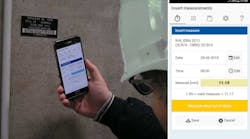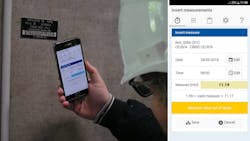The advent of smartphones and tablets has given a big push to the possibility of using operation technology (OT) on remote device applications. In the past, power systems data and control systems were strictly relegated to centralized systems. In the last 10 years, in fact, the update and upgrade of OT applications have transformed a large part of legacy platforms into tools based on modern frameworks, which exploit connectivity and remote access.
The features and functionalities of such OT applications have also changed their look, passing from a desktop design to a touchscreen one, which typically is more immediate and user-friendly. This process involved OT systems in different industrial sectors, including the electric sector, where it implied changes in daily work both for workforces and engineers.
The use of mobile devices may include, but is not limited to, the following fields of application:
- Field measurement
- Asset management
- Operation management
- Predictive maintenance
- Real-time monitoring and control of the network/plants
An interesting example to show the impact of these changes and the advantages provided by mobile apps are systems for the management of survey campaigns of field measurements produced by mobile terminals. Such systems have been created with an aim of facilitating the operations performed on the field for the measurement of manual instrumentation. Furthermore, they ensure complete and simplified management of the manual measurement campaigns carried out at dams and/or plants that require periodic checks in order to assess the operational status of the field equipment. The core of the system remains centralized, but the integration of mobile devices empowers and simplifies the data acquisition process.
These systems usually consist of an application to be installed on smartphones/tablets and a software platform to be used on the central system. Such a platform allows the transfer of configurations to the mobile devices' memory and the reception of data acquired by such devices for subsequent storage in the historical database of measurements.
Data acquisition via mobile benefits particularly from a user-friendly application and the device camera. The connection with the central system allows the electric utility workforce and engineers to minimize the actions to be performed on the field to set up the measurement system, thanks to the possibility of accessing the stored configurations. Moreover, the camera provides images that can be used for automatic recognition of the measuring point (for example, identification of station/equipment barcode) and the subsequent load on the mobile application of the proper configuration for data acquisition. The application will allow a consistency check between the sensor code detected by the barcode (or selected by the operator) and the list of sensors present in the configuration loaded on the mobile device. For each sensor encoded by the barcode, the terminal will only request the measurement made according to the unit of measurement provided in the configuration.
Usually, such applications also integrate data acquisition from traditional systems such as manometer, centesimal comparator, optical reading system, station electronic instrumentation, and so forth.
Finally, the connection to the central system allows the recovery of measurements and notes stored in the mobile devices after the measurement campaign, so they can be exported to the data processing and analysis system and transferred to the historical archive.
In some cases, these applications are empowered by augmented reality (AR) tools and advanced functions that are particularly useful for the electric utility workforce to perform on-field maintenance. In such cases, these applications allow technicians, through mobile devices, to leverage the collected data for analysis purposes and quickly find an effective solution to the problem that has happened on the field.
Furthermore, these applications, in some cases, can also benefit from the connection with the centralized systems for predictive maintenance. Such systems can be fed by data collected from the technicians in plants and stations and use them for scheduling and optimizing maintenance interventions — in recent years also exploiting artificial intelligence (AI). The connection to these systems from the mobile enables the electric utility workforce to access the information related to the maintenance of the equipment, download the activities to be performed, and optimize on-field interventions.
As previously mentioned, electric utility engineers also benefit from the availability of applications on remote devices used in daily operation. These applications installed on mobile devices, in fact, are typically provided with the same look and functionalities of the desktop version and are particularly useful for people who deal with real-time monitoring and control of the network/plants and who must guarantee their availability for intervention periodically when they are out of office. The user-friendly interface on mobiles usually consist of a synthetic dashboard properly designed to show alarms and provide brief monitoring and control of the system.
In developing and providing remote access for all these applications, the cybersecurity aspect should be strongly considered. The golden principle to be followed is "security-by-design," but often it is not possible because in most cases the mobile app has to be integrated in a legacy framework. So, it is important to focus on hardware security — allowing the use of only strictly trusted devices — and internet security — permitting connection only using secure VPN, protected with a strong access policy.
In this respect, the CESI Group — a world leader in technology and innovation for the power sector — is committed to researching and applying various means to its global customers regarding these topics.



